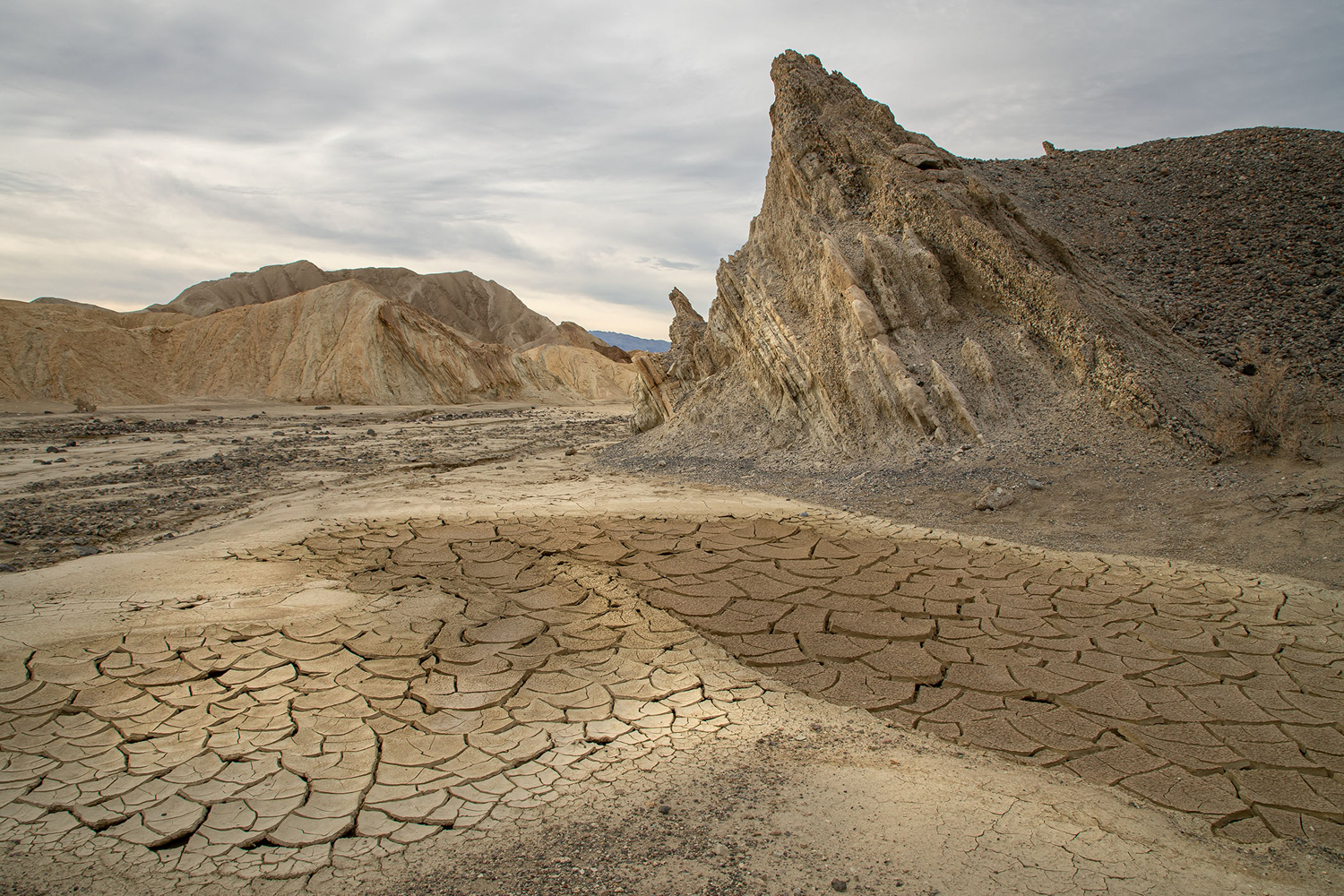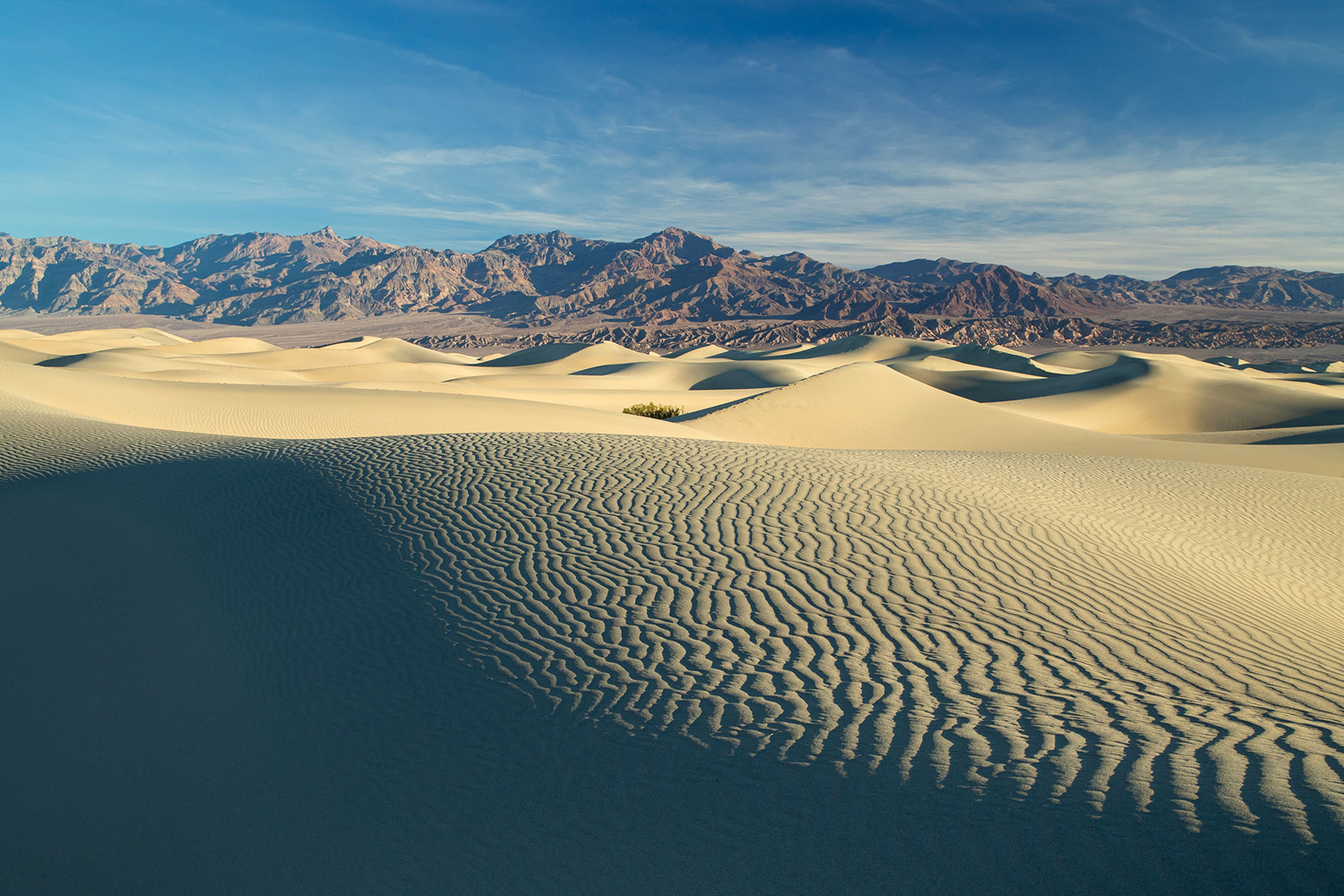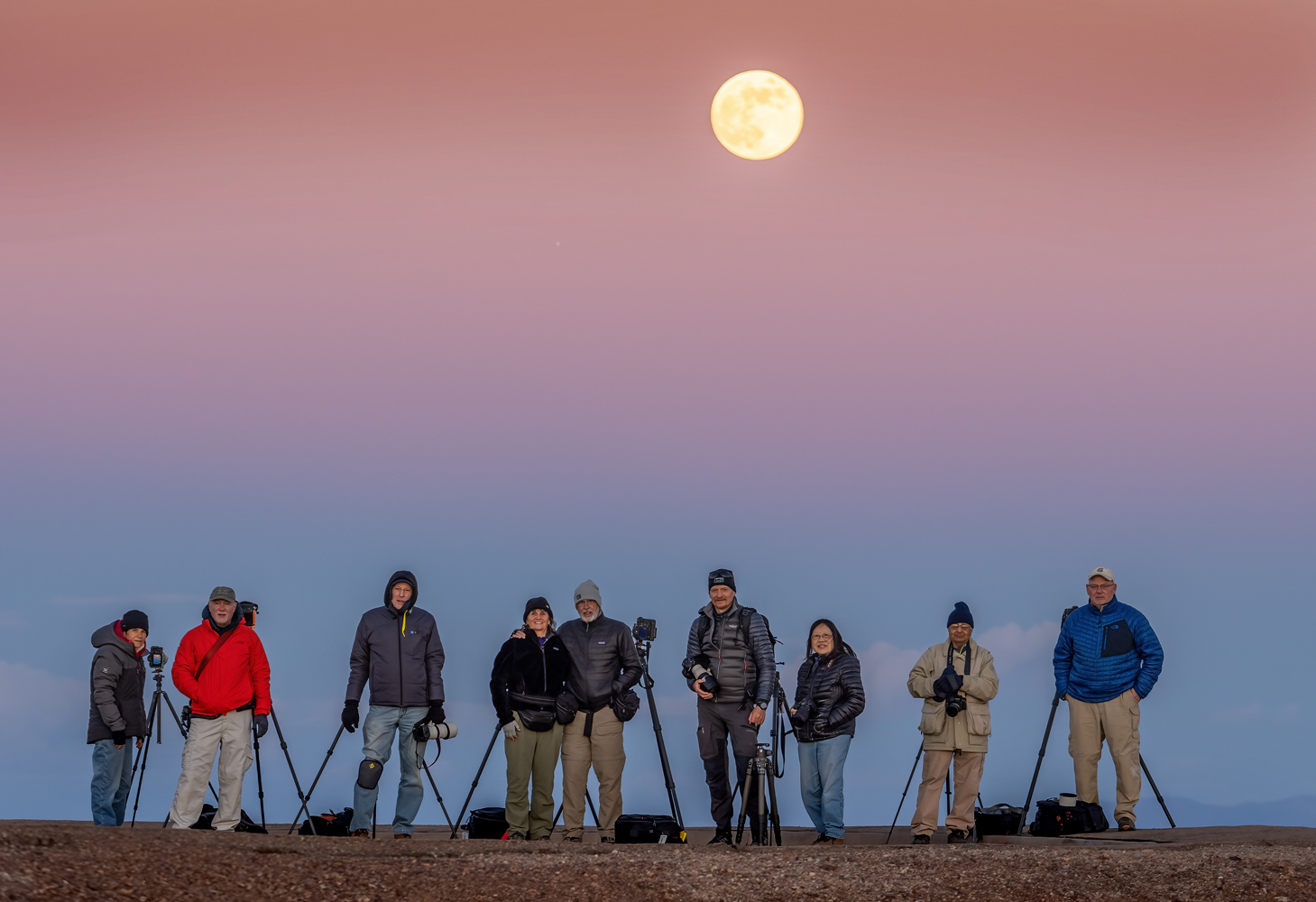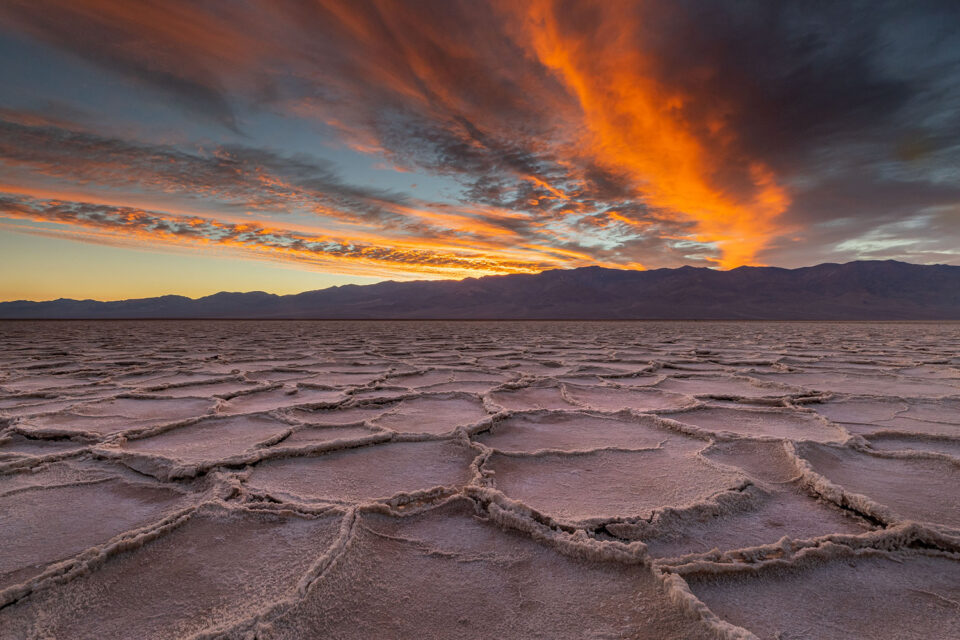In the big dry desert country of western North America, there is no better place for landscape photographers to explore the unshielded boney crust of the earth and no place in the US that offers a better combination of alien terrain than Death Valley National Park. This formidable area of America’s Great Basin boasts some of the hottest, driest, sandiest, and lowest landscapes found in one place. That said, during this past August, Death Valley experienced record-breaking floods that closed considerable parts of the park. Our concerns for our trip being limited in photographic offerings due to these high waters were quickly set aside. Thanks to the recovery efforts of the National Park Service as well as the State of California, all areas of the park we regularly like to access for great photo locations were open and easy to get to.
This is a quintessential landscape trip. For a better part of the year the conditions in Death Valley are tough on photographers. December finds us with cool temperatures and good shooting conditions. I would never come to Death Valley with the intention of photographing wildlife as we usually only encounter a few hearty and adaptable ravens, and the occasional rock wren during our photo travels. I should also mention that three times we observed a rather weather-beaten coyote, panhandling his way along the road near our lodging. Wile E. Coyote!

It really is about the landscape here, and this was a great year for it. Normally skies over our western deserts can be wrung free of clouds providing a detail-free blue dome stretching to the horizon. But this winter season our photography benefited from the presence of morning and afternoon clouds lending detail and texture to most of those sweeping landscapes. Another welcome element to our landscape photography was the addition of the full moon meeting us near the horizon around sunrise and sunset each day of the trip.

With our lodging central to all our photo locations, our day would start with us in position ready to take advantage of each new sunrise at a different location. As usual we would photograph until mid-morning have a quick field breakfast and reposition for some more photography before heading back to the lodge for lunch and a short break to recharge batteries. After a quick reset we were back out for late afternoon light that would lead us right into another desert sunset. And so, we went from rocky outcrops to silky sand dunes and crusty salt flats. All said, some of our favorite photography was found tucked in corners of the park’s narrow canyon trails were spires of colorful mineral-laden rock enticed us to wander and photograph for hours.

There is something special about photographing this dry rocky land, especially when the national park crowds are thin, the air cools and winter light bathes these desert bones. We are home now, but already missing this abstract terrain. The photos now processed bring us memories of this winter adventure and remind us of the pleasure of our fellow nature photographer’s company.

